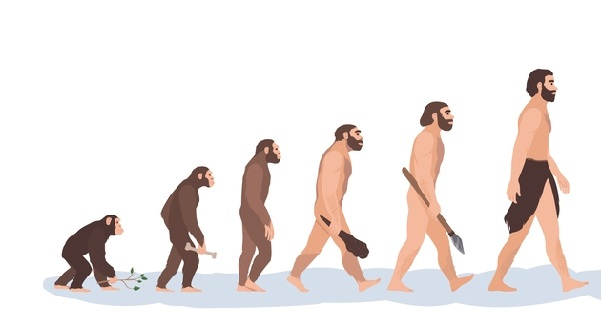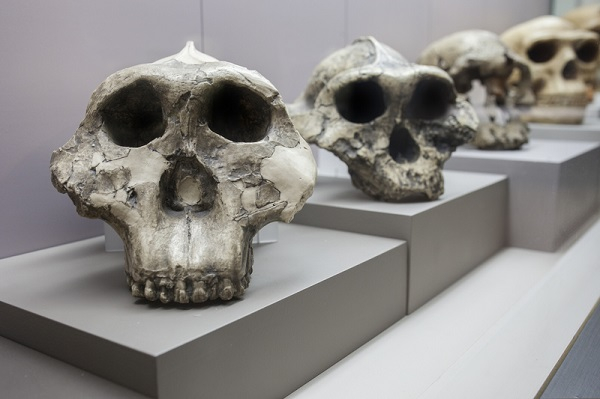

Anthropology can be termed as the scientific study of people, which includes the study related to the historical and modern human species, human behaviour, biology, civilizations, and linguistics perspective. Biological anthropology is a branch of science that studies human biology. The investigation is aided by utilising a variety of modern techniques, ranging from 3D scanning and forensic analysis. This knowledge is useful in tackling today's modern dilemmas.
Why do humans differ so much? People may be found anywhere from the freezing Arctic to the deserts of sub-Saharan Africa. People speak more than 6,000 different languages. The formation and evolution of civilizations and cultures are the subjects of anthropology. Anthropologists explore the characteristics of historical and present human groups using a variety of methodologies. This is accomplished by researching and describing the historical lives of past human civilizations and the numerous cultures of the world.
To understand human civilizations, cultures, and their development, biological anthropologists use biological and behavioural characteristics of people. It is a mixture of biological and social science that uses knowledge related to non-human primates, extinct human ancestors, and present populations of humans to analyse people in the past and the present. To conduct human biological investigations employing skeletal tissues and human remains, good ethical and theoretical research standards have been developed, and anthropology has played a key role in this process. The study of biological anthropology is based on a thorough understanding of human odontology and osteology

Figure 1: Human evolution stages
Researchers may examine how the social behaviour of early humans has evolved. The vast collection of castings of early human skulls from different periods throughout the last 7-8 million years, represents fossils of the species. studying the development of hominid social behaviour, which may be inferred from variations in the size and form of fossilised skulls, has been a crucial part of anthropology. It also helps to reveal the sexual dimorphism of extinct hominins.

Figure 2: Isolated human skulls of different period
The investigation of forensic cases, diseases, and human health in ancient cultures (bioarchaeology, palaeopathology, forensic anthropology). to provide light on different research topics in these fields. The polyurethane resin used to create the castings is specially prepared. This act as a great source of an integral part of human skeleton anatomy and morphology.
Forensic anthropology − This scientific method focuses on identifying the suspects, victim, or deceased at the personal level and recreating the circumstances surrounding the death.
Bioarchaeology − It is the utilisation of skeletal remains and biological anthropological methods to recreate past populations' lifestyles from an archaeological environment.
Medical anthropology − It aims to get a deeper understanding of the aspects that impact human health and well-being.
Anthropological genetics − As the area grows on the mechanisms of microevolution and natural selection, application in current human genetic research is vital.
Human Variation − Variation indicates genetic adaptability as well as biological, social, and environmental changes. Comparative human growth, skin pigmentation, illness susceptibility and advantage, and character development are the component of this field
With such extensive knowledge being available, there is a growing appreciation for what anthropology has learned and may uncover about people. stages of growth, growth patterns of a population, factors affecting the nutritional status and reproductive biology, and population variation, all come under the flagship of physical anthropology. Physical anthropology places a high value on growth and development, which includes examining secular trends, stages of growth, population growth patterns, variables impacting nutritional status and reproductive biology, and population variance. The contributions of Biological anthropology to dentistry, medicine, and industrial research are evident to tell that growing knowledge of the field help to reveal and solve the modern questions of society.
The evolution of human civilizations and cultures is the subject of anthropology. To understand human civilizations, cultures, and their development, biological anthropologists use biological and behavioural characteristics of people. By 3D surface scanning: researchers may examine how the social behaviour of early humans has evolved. Cast series and pathologies help in the investigation of forensic cases, diseases, and human health. stages of growth, growth patterns of a population, factors affecting the nutritional status and reproductive biology, and population variation, all come under the flagship of physical anthropology. The contributions of Biological anthropology to dentistry, medicine, and industrial research help to reveal and solve the modern questions of society.
Q1. What distinguishes anthropology from sociology?
Ans. Anthropology is the scientific and humanistic study of the human species, its many variations, and the behaviour of individuals at the micro-level. While sociology is the study of the growth, composition, interaction, and behaviour of structured human groups.
Q2. What do you mean by Anthropometry?
Ans. The science of anthropometry describes how to physically measure a person based on factors like size, shape, and functional abilities.
Q3. What does "cultural anthropology" mean?
Ans. A subfield of anthropology called "cultural anthropology" focuses on researching the differences in human cultures.
Culture and its history are utilized to define national identity, which serves to reflect and form values, beliefs, and objectives. As a result, it must be preserved in order to preserve humankind's identity.